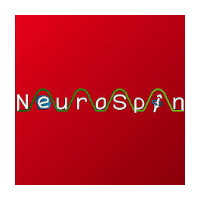
27 Mar PhD – Neural Oscillations in Temporal Processing
We are recruiting a promising PhD candidate to compete with us for the project: Exploring the functional role of neural oscillations in temporal processing (Abstract below), which has been preselected for the Numerics PhD program.
The final application will be revised and submitted jointly by the applicant and the project supervisors: Sophie Herbst and Virginie van Wassenhove. Please see the Applicant’s guide.
Contact info: Sophie Herbst <ksherbst@googlemail.com>
Requirements:
- Interest in human timing & time perception and neural oscillations
- Prior experience with psychophysics, human psychology, neurosciences, and/or (as a plus) magneto/encephalography
- Basic programming skills (Matlab/ Python)
- Mastery of the English language in spoken and written form
- Team spirit, enthousiasm, and motivation to manage a scientific project to completion!T
- Mobility requirement: the candidate must not have resided in France for more than one year since 2016.
Abstract:
Neural oscillations are functionally implicated in the binding, prediction and orchestration of information processing as per the communication-through-coherence hypothesis (Engel, Fries, König, Brecht, & Singer, 1999; Engel, Fries, & Singer, 2001; Fries, 2005, 2015; Nikolic, Fries, & Singer, 2013). At the mesoscopic scale, neural oscillations reflect the mean activity of local neural assemblies and at the macroscopic scale, rhythmic fluctuations capture inter-areal synchronizations over time and space (Buzsáki, Anastassiou, & Koch, 2012; Engel et al., 2001; Siegel, Donner, & Engel, 2012; Wang, 2010). Brain rhythms are phylogenetically preserved (Buzsaki 2004; Fig. 1) and their synchronization temporally adjust processing windows ensuring efficient communication between brain regions (Varela 1981, Fries 2005, Bastos et al 2015). Oscillatory activity may follow a hierarchical organization in which low frequency regimes modulate higher-frequency activity (Lakatos et al 2005). Such “cross-frequency coupling” was reported (Palva et al 2005; Canolty et al 2006) during spatial navigation (Bragin et al 1995, Tort et al 2008), working memory (Tort et al 2009, Heusser et al 2016), speech processing (Canolty et al 2006) and time production (Grabot et al 20187). This PhD project will questions the implication of neural oscillations in temporal processing. The project will use brain imaging data acquired with high temporal resolution (MEG, EEG) and make use of statistical models of human behavior and electromagnetic brain activity, notably the modeling of oscillatory brain networks (Dupré la Tour et al. 2017).


Sorry, the comment form is closed at this time.